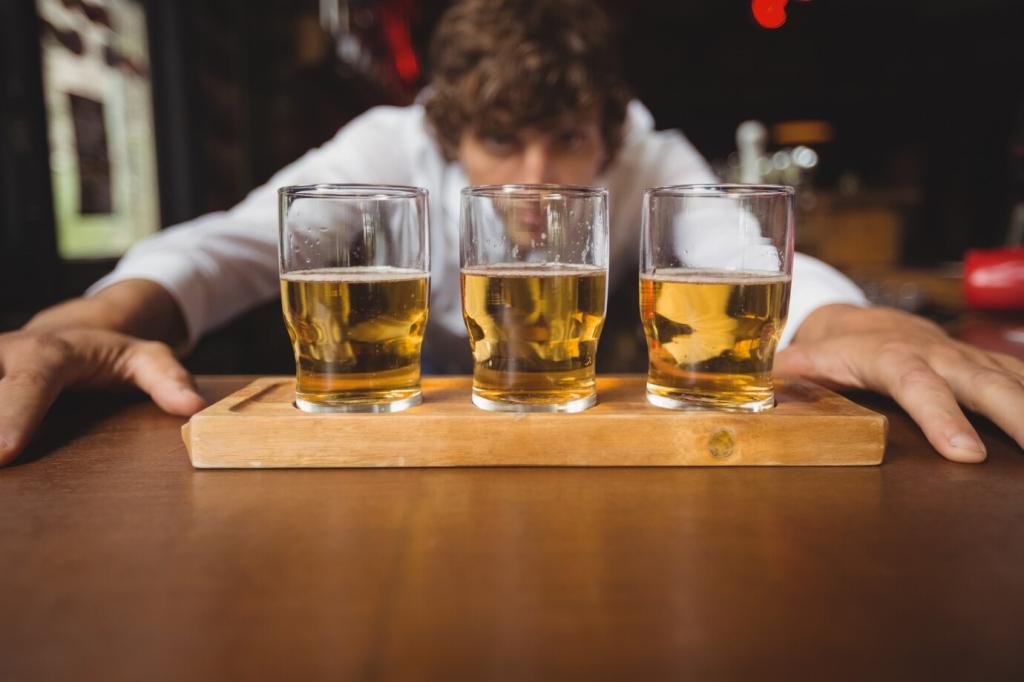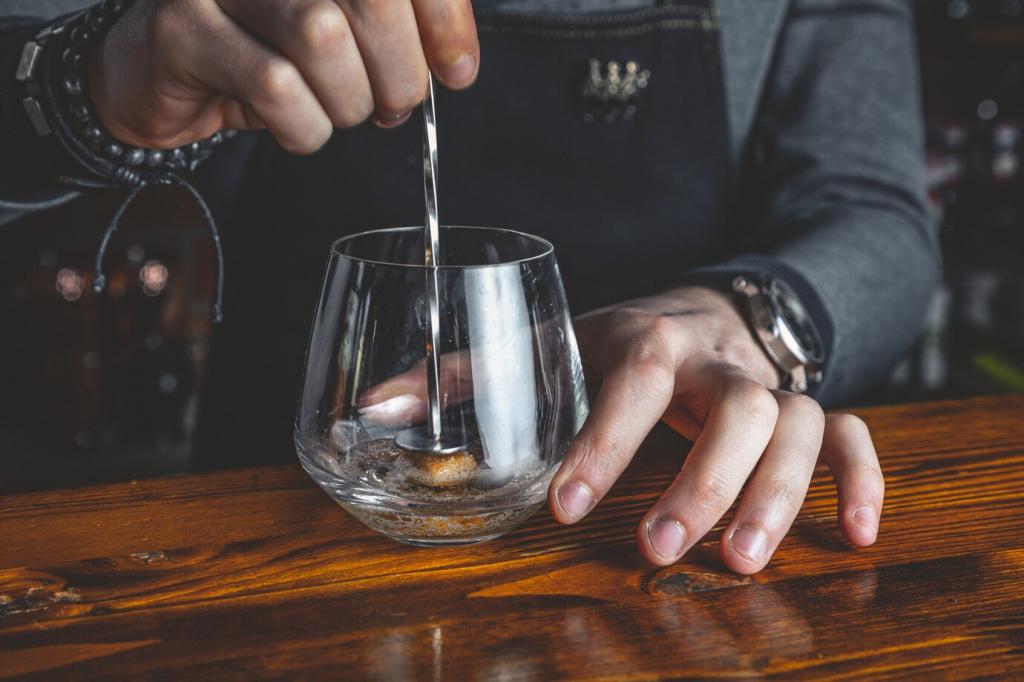Mastering Whiskey Tasting Techniques
Chosen theme: Whiskey Tasting Techniques. Step into a warm, welcoming space where your curiosity leads the way—learn how to see, nose, sip, and savor whiskey with confidence, nuance, and joy.

Choosing the Right Glass for Precision
A tulip-shaped Glencairn concentrates aromas and helps you swirl without spillage, while a copita sharpens delicate notes. Avoid wide tumblers for serious tastings. What glass magnifies your experience most? Tell us and compare notes with fellow readers.

Preparing Your Senses Before the First Pour
Rinse your mouth with room-temperature water, avoid strong flavors for thirty minutes, and silence scented candles. A clean, neutral environment amplifies subtlety. Try three deep nasal breaths to reset focus, then sip slowly. Subscribe for a printable pre-tasting checklist.

Serving Temperature and Ambient Factors
Room temperature, around 18–22°C, reveals complexity without blunting aromas. Excess heat lifts alcohol burn; cold suppresses nuance. Dim, calm lighting helps concentration. What room rituals help you tune in? Share your best practices for consistent, clear impressions.

Interpreting Color Without Jumping to Conclusions
Amber may suggest sherry casks; pale straw hints at ex-bourbon wood. But beware caramel coloring in some bottles. Note hue and saturation, then test the theory on the palate. What color surprised you most once you finally tasted?
Clarity and Sediment as Context, Not Verdict
Non-chill-filtered whiskey can haze with water or cold; that’s not a flaw. Sediment might indicate cask strength authenticity. Document what you see, then let aroma and taste carry weight. Do you value natural presentation? Tell us your stance.
Legs, Viscosity, and What They Actually Mean
Slow, thick legs can suggest higher alcohol or glycerol-like texture from maturation, but not sweetness itself. Swirl gently; watch the streaks descend. Compare leg behavior across proofs. Keep a log and subscribe for our texture tracking worksheet.


Nosing with Intention: Building an Aroma Map
Hold the rim just below the nose; breathe in short, delicate puffs with your mouth slightly open to diffuse ethanol. Move the glass in tiny arcs. Pause between passes. What distance feels perfect to you? Experiment and record findings.
Nosing with Intention: Building an Aroma Map
Group notes by families—fruity, floral, malty, spicy, woody, earthy, and funky. Start broad, then zoom in: orchard fruit to baked apple, clove to allspice. Build a consistent vocabulary. Share your wheel snapshots and inspire newcomers to refine language.
On the Palate: Sip, Roll, and Breathe
Your first sip acclimates the palate to alcohol; swallow quickly and reserve judgment. The second sip reveals structure. Compare both experiences and note differences. Do you notice sweeter mid-palate after calibration? Record it and discuss with our community.
On the Palate: Sip, Roll, and Breathe
Is it silky, waxy, creamy, or drying? Track tannic grip from oak, oiliness from long maturation, and effervescence at higher proofs. Visualize texture on a simple scale. Share photos of your mouthfeel map to help others learn.
On the Palate: Sip, Roll, and Breathe
Observe the sequence: arrival, development, crescendo. Fruit can give way to spice, then chocolate and oak. Note sweetness versus bitterness, acidity versus umami. Which transitions shock you most? Comment your favorite evolutions and subscribe for flavor layering drills.

Count seconds: short under ten, medium to thirty, long beyond. But also note character—clean citrus fade or warm tobacco bloom. Write both duration and personality. What finish lives rent-free in your memory? Post your timeline for others.

Gently exhale through your nose after swallowing to catch hidden esters and oak spices rising back. Try this with and without water. Which aromas bloom late for you? Describe your retro-olfactory discoveries to help newcomers unlock depth.

A few drops can extend or clarify finish, revealing honeyed notes or softening tannins. Test incremental dilution and chart effect on aftertaste. Which proof sings? Share your dilution ladder and subscribe for our downloadable tasting data sheets.


Water, Ice, and the Art of Dilution
Use a pipette to add water drop by drop, tasting between additions. Note when aromas blossom or collapse. Keep proof estimates. Which moment feels like the curtain lifting? Compare experiences in the comments to refine your personal approach.
Water, Ice, and the Art of Dilution
Large, clear cubes chill slowly with less dilution; stones cool even less but can mute aromas. Choose based on context: casual sipping or analysis. What do you reach for on warm evenings versus focused sessions? Share your seasonal strategies.
Designing Flights and Taking Useful Notes
Choose a theme: ex-bourbon versus sherry, peated versus unpeated, or age progression. Arrange lightest to heaviest. Keep pours modest to avoid fatigue. What flight taught you most this month? Post your lineup and the biggest takeaway you discovered.

Pairing and Palate Care for Clearer Perception
Match intensity and complement dominant notes: nutty cheddar with sherry casks, dark chocolate with peat, orchard fruit tarts with ex-bourbon. Test contrasts carefully. What pairing elevated a familiar bottle for you? Tell us and inspire our next experiment.
Pairing and Palate Care for Clearer Perception
Steer clear of coffee, toothpaste, spicy foods, and heavy perfume for at least an hour. Hydrate well. Keep plain crackers nearby. Which sneaky palate killers tripped you up? Share your cautionary tales to help the community taste smarter.
